Bonaire's history is deeply rooted in its inhabitants and their culture.
The tranquil beauty of the island is reflected in the faces of her people.
From the first inhabitants, the Caiquetios (a branch of the Arawak Indians)
who sailed from the coast of Venezuela almost 1000 years ago, to the many
cultures now living and working in Bonaire today, the island has a distinct
character that is all its own.
Bonaire History The first Europeans came to Bonaire in 1499, when Alonso de
Ojeda and Amerigo Vespucci arrived and claimed it for Spain. Finding little
of commercial value and seeing no future for large-scale agriculture, the Spanish
decided not to develop the island. Instead, they unceremoniously enslaved the
Indians and moved them off to work in the plantations on the Island of Hispanolia,
effectively leaving the island unpopulated.
The name Bonaire is thought to have originally come from the Caiquetio word 'Bonay',
a name that meant low country. The early Spanish and Dutch modified its spelling
to Bojnaj and also Bonaire. The French influence while present at various times never
was strong enough to make the assumption that the name means 'good air'. Regardless
of how the name came about, the island remained as a lonely outpost until 1526.
It was in that year, 1526, that cattle were brought to the island by then governor Juan de Ampues.
Some of the Caiquetios were returned to act as laborers and in a few years, the island
became a center for raising other animals such as sheep, goats, pigs, horses and donkeys.
Since they were being raised more for their skins and not their meat, they required
little tending and were allowed to roam and fend for themselves. The result was large
herds of animals that far outnumbered the population. Today, there are a number of wild
donkeys that still inhabit the Kunuku (outback) and many goats can also be seen foraging
in less populated areas of the island.
Bonaire's early years were not ones of prosperity. Her inhabitants were mostly convicts
from other Spanish Colonies in South America. The only permanent settlement was the village
of Rincon, located far inland where it was thought to be safe from marauding pirates.
In those years, development was discouraged in favor of the richer, more productive colonies.
In 1633, the Dutch took possession of Curacao, Bonaire and Aruba. The largest island, Curacao,
emerged as a center of the notorious slave trade. Bonaire then became a plantation island
belonging to the Dutch West Indies Company. It was during those early years that the first
African slaves were forced to work, cutting dyewood and cultivating maize and harvesting solar salt.
Grim reminders of those days still remain in the form of slave huts and salt pans which were
laboriously constructed by hand. They are an important part of the island's heritage and have
been left to stand mute testimony to Bonaire's repressive beginning.
Until 1816, ownership of Bonaire changed hands a number of times, finally being returned that
year to the Dutch as a result of the Treaty of Paris. A small fort, Fort Oranje, was built to
protect the island's main resource, salt. Salt was one commodity that Bonaire had in endless
supply, although it took back breaking slave labor to produce it. In the early days of the
industry, the most important use for salt was in the preservation of food, since refrigeration
was still centuries away.
By 1837, Bonaire was a thriving center of salt production. The government, who by then controlled
the industry, built four obelisks, each painted a different color, red, white, blue and orange
(the colors of the Dutch Flag and the Royal House of Orange). They were erected strategically
near areas of the salt lake. The idea was to signal ships where to pick up their cargoes of salt.
A flag of the corresponding color was raised atop a flagpole, thus signalling the ship's captain
where to drop anchor. Three of the obelisks can still be seen today.
The abolition of slavery in 1863 signaled an end to the era of exploitation of those first Bonaireans.
It was almost a hundred years later that the salt industry was revitalized. Today it is a division
of Cargill, Incorporated, one of the largest businesses in the world. It also was during this time
that the island began to attract visitors.
Tourism was born when the island government constructed the first ship's pier in the harbor. It allowed
cruise ships to tie up alongside the wharf and discharge passengers. It also made it easier to bring
in goods and supplies for the island's residents. Hotels began to spring up and cater to the early visitors
who enjoyed the tranquility of Bonaire. In 1943, the construction of a modern airport south of Kralendijk
made it even easier for tourists to reach the island.
The history continues to be written. The people of Bonaire are part of the past and are proud of what they
have accomplished on an island that was abandoned hundreds of years ago and deemed useless by the Spanish.
As for the future, Bonaireans welcome progress but have made a conscious decision to take time out and step
back and to look at how it will impact their island and their lives. They have learned to balance their
growt with the environment.
Back to Top
Bonaire's Culture
The Bonairean culture is reflected in the faces of her people. Its origins are as varied as are the
ethnic roots of the 15,000 plus residents. The real Bonairean culture is based on traditions that go
back many generations and are chronicled in the songs and dances that are performed during holidays
and festivals. It is also based on strong family ties and a general respect for nature and an
understanding of an environment that originally was foreign to those first settlers and slaves that
were forced to work the inhospitable, arid land.
Kids Those early days of slavery conditioned the people to be strong and to maintain a spirit that
marks Bonaire and her people as extremely friendly and ready to smile when approached. Most of the
people will raise a hand and wave to total strangers on the street. It was during this time that
the spirit of the people began to develop and they made up songs, invented dances and began to sing
in the old African Tradition. These songs and dances evolved into festivals and have survived to
become an important part of life and culture on Bonaire.
The dances of the Simidan and the Bari are the best known. The traditional Waltz, Mazurka and the
Polka and the local "Baile di Sinta" (ribbon dance) were performed as well as the Rumba, the Carioca
and Merengue which came from other islands. American Jazz also influenced the local traditions of song
and dance. Along with an eclectic assortment of homemade musical instruments, those early performers
set the stage for a rich, local tradition.
Back to Top
Bonaire's Churches
Religion is an integral part of life of many Bonaire residents, as well as a strong
part of the cultural history of Bonaire, and there are quite a number of churches of
all types on the island. While at present all Bonairean churches are Christian, an
Islamic mosque is being constructed. Further below you will find a list of the various
place of worship on Bonaire.
We'd like to remind visitors to our Web site that Bonaire's churches are always delighted
to see island residents and visitors attending their church services. However, they do ask that
visitors respect the hospitality of Bonaire's spiritual community and wear appropriate attire
when attending services. No beach wear, shorts, T-shirts or slippers (flip flops), please.
Bonaire Christian Fellowships:
"Proclaiming Life Abundantly"
Sunday Service 10am
Bible Fellowship - Dutch, Friday 7:30pm
Radio program for kids:
Bon Dia Jesus, Ritmo FM 97.1, Wednesday 7-9pm
Tel: +599 717 4835
Evangical Alliance Mission: Worship service, Nord Salina, Sunday 8am
Prayer service, Nord Salina, Wednesday 7pm & 7:30pm
Tel: +599 717 6245
Worship service, Nikiboko, Sunday 9am
Prayer service, Nikiboko, Sunday 6:30pm & Thursday 7:30pm
Sunday School, Rincon, Sunday 10:15am
Prayer service, Rincon Sunday 7pm & Wednesday 7:30pm
Jehova's Witnesses: Antriol
Tuesday 7:30pm - Spanish/Papiamento
Thursday 7:15pm - Papiamento
Sunday 9:30am - Papiamento
Sunday 6pm - Spanish
Tel: +599 717 5253
Our Lady of Coromoto: (Roman Catholic) Antriol
Saturday 7pm
Sunday 6pm
Tel: +599 717 4211
San Bernardo Church: (Roman Catholic) Kralendijk
Sunday 9am & 7pm
Tel: +599 717 8304
San Ludovico Church: (Roman Catholic) Rincon
Sunday 6am & 9am, 7:30pm
Weekdays 7:30pm
Seventh Day Adventist Church: Antriol & Rincon
Saturday 915am
Wednesday 7:30pm
Tel: +599 717 4254
The Church of Jesus of Latter-Day Saints: Kaya Sabana 26
Sunday 9am - 12pm
Every other Wednesday 7pm
Tel: +599 717 8751
International Bible Church of Bonaire:
Trans World Radio
Sunday 9am & 6:00pm - English
Sunday school 10:15am
Tel: +599 717 8800
United Protestant Church:
Sunday, Rincon 8am
Sunday, Kralendijk 10am
Tel: +599 717 8086
Back to Top
|
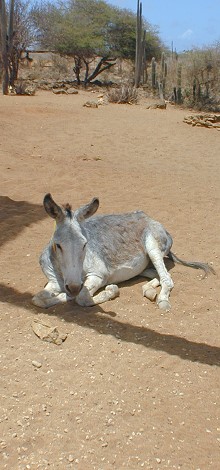
Cattle Roaming the Land
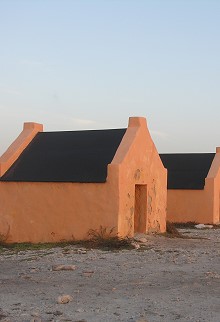 Slave Huts
Slave Huts
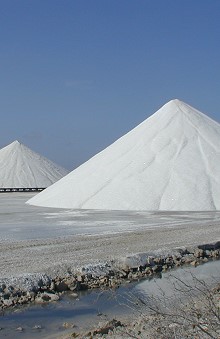
Salt Mine
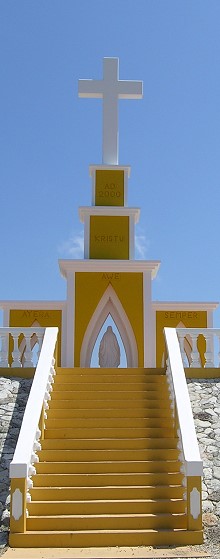
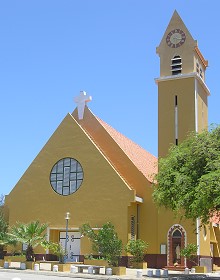
Church02
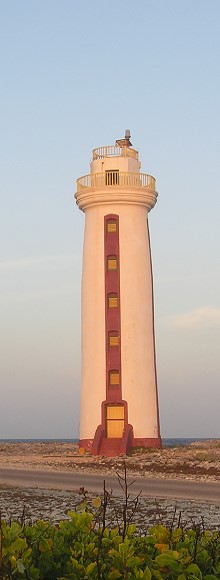
Lighthouse on Bonaire
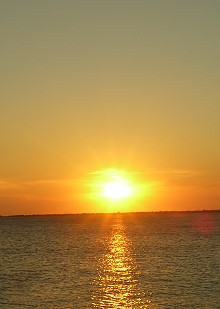
Evening Sun
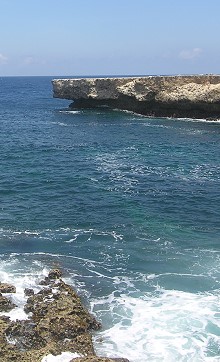
Sea View
|